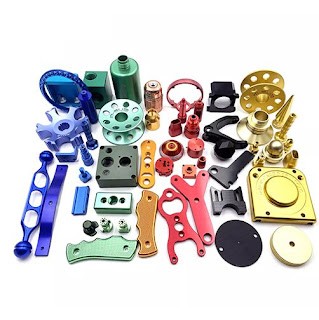What are the applications of lithium battery laser welding machine?
As a new type of clean energy, lithium batteries can not only provide power for new energy vehicles, but also provide power for various products such as electric trains, electric bicycles, and golf carts. The production of lithium-ion batteries is closely linked by one process step. The production process roughly includes pole piece manufacturing, battery cell manufacturing, and battery assembly. Among them, laser technology represented by laser welding is widely used in the manufacture of lithium batteries. Today, Leapion Laser will give you an analysis. What are the specific applications of lithium battery laser welding machines in manufacturing?
1. Welding of battery explosion-proof valve
The explosion-proof valve of the battery is a thin-walled valve body on the battery sealing plate. When the internal pressure of the battery exceeds the specified value, the valve body of the explosion-proof valve ruptures to prevent the battery from bursting. The safety valve has an ingenious structure, and this process has extremely strict requirements on the laser welding process. Before continuous laser welding, the battery explosion-proof valve was welded using pulsed laser welding. Continuous sealing welding was achieved through the overlap and coverage of the welding spot and the welding spot, but the welding efficiency was low and the sealing performance was relatively poor. Continuous laser welding can achieve high-speed and high-quality welding, welding stability, welding efficiency and yield can be guaranteed.
2. Welding of battery tabs
The tabs are usually divided into three materials. The positive electrode of the battery uses aluminum (Al) material, and the negative electrode uses nickel (Ni) material or copper-plated nickel (Ni-Cu) material. In the manufacturing process of power batteries, one of the steps is to weld the battery tabs and poles together. In the production of the secondary battery, it needs to be welded with another aluminum safety valve. Welding must not only ensure the reliable connection between the tab and the pole, but also requires a smooth and beautiful welding seam.
3. Spot welding of battery poles
The materials used for the battery electrode strips include pure aluminum strips, nickel strips, aluminum-nickel composite strips, and a small amount of copper strips. The welding of battery electrode strips generally uses pulse welding machines. With the emergence of IPG’s QCW quasi-continuous laser, it has also been widely used in battery electrode strip welding. At the same time, due to its good beam quality, the welding spot can be small. , It has unique advantages in dealing with the welding of high-reflectivity aluminum strip, copper strip and narrow-band battery pole strip (the pole strip width is less than 1.5mm).
4. The power battery shell and the cover plate are sealed and welded
The shell materials of power batteries are aluminum alloy and stainless steel, of which aluminum alloy is the most used, generally 3003 aluminum alloy, and a few use pure aluminum. Stainless steel is the material with the best laser weldability, especially 304 stainless steel. Whether it is pulsed or continuous laser, welds with good appearance and performance can be obtained.
The laser welding performance of aluminum and aluminum alloys varies slightly depending on the welding method used. Except for pure aluminum and 3 series aluminum alloys, there is no problem with pulse welding and continuous welding. For other series of aluminum alloys, continuous laser welding is the best choice to reduce crack sensitivity. At the same time, select the appropriate power laser according to the thickness of the power battery shell. Generally, when the shell thickness is less than 1mm, single-mode lasers within 1000W can be considered, and single-mode or multi-mode lasers above 1000W should be used for thicknesses above 1mm.
Small-capacity lithium batteries often use relatively thin aluminum shells (thickness about 0.25mm), and 18650 and the like use steel shells. Due to the thickness of the shell, the welding of this type of battery generally uses a lower power laser. Using continuous laser to weld thin-shell lithium batteries, the efficiency can be increased by 5 to 10 times, and the appearance effect and sealing performance are better. Therefore, there is a tendency to gradually replace pulsed lasers in this application field.
5. Power battery module and pack welding
The series-parallel connection between the power battery is generally completed by welding the connecting piece and the single battery. The materials of the positive and negative electrodes are different. Generally, there are two kinds of materials: copper and aluminum. Since the laser welding between copper and aluminum forms a brittle compound, it cannot To meet the requirements of use, ultrasonic welding is usually used, and battery laser welding is generally used for copper and copper, aluminum and aluminum. At the same time, because copper and aluminum conduct heat very quickly, have a very high reflectivity to the laser, and the thickness of the connecting piece is relatively large, it is necessary to use a higher-power laser to achieve welding.
Because there are many welding parts for lithium batteries, the difficulty is high, and the precision requirements are high. Therefore, traditional welding methods are difficult to meet the current production needs. Because of its fast speed and high precision, the laser welding machine has low welding material loss, small deformation of the welded workpiece and high welding quality during the welding process, which can greatly improve the safety and reliability of the power battery.


评论
发表评论